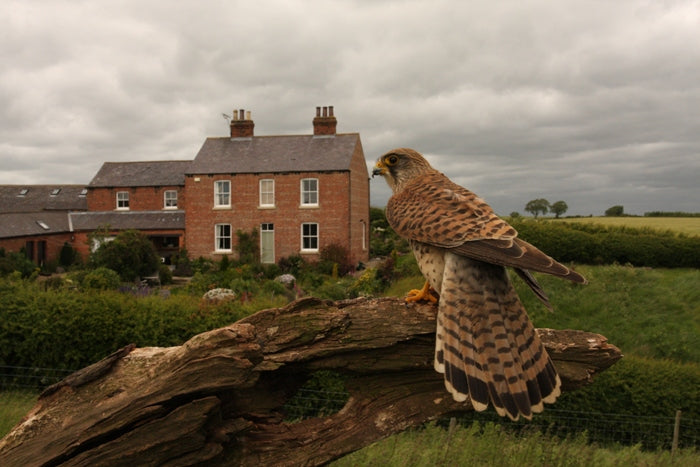
Designing a garden for wildlife: mapping out the borders
When my wife Victoria and I moved to Fotherdale, the garden had been leveled with a JCB digger and there were only two plants remaining – a red hot poker and a fushia. This was actually ideal because we had a blank canvas to work on. The first thing we did was get the vegetable patch going and plant a hawthorn hedge along the boundary. Neither of us are particular fans of expanses of lawn so we divided the space into flower borders and winding paths.
It wasn’t easy. There was just 4"of topsoil before you hit solid chalk. My brother was farming nearby and we asked him for some manure to spruce up the soil. He arrived with a big grin on his face and 12 tonnes of manure which he uncermoniously dumped at the bottom of the drive. We barrowed it, bit by bit, onto the mapped out borders. The following year another 12 tons was needed for another part of the garden.
Designing a garden for wildlife: offering water
The wildlife was very disappointing at Fotherdale, especially as I had just moved from Givendale where wildlife teamed. We set about digging a pond with running water for the birds. There is virtually no permanent water within miles of us. This was the most important thing we did. In the first few days of filling it the birds began to flock in from all angles to bathe and drink this new water supply. One dry autumn we had a 'super charm' of goldfinches!
Just look at it now:
https://youtu.be/MyZSXRCnAps
Designing a garden for wildlife: planting a woodland
The site is exposed and the plants get battered by the wind, but we've noticed that the plants here grow to a 'Fotherdale' size and they all shelter and support each other. I stuck to native species that offer nectar for the insects in the summer and berries in the winter so that I can keep up food supplies to birds all year round. Click here to read more on which plants I chose to attract which birds. We've had some plant losses and some successes, but generally the plants love the fast draining land and all-day sunshine that the garden offers.
Each year we've improved on the project. We have planted a 1,200 trees to create a woodland on the slope at the back of the house which has brought in more wildlife and also helps to protect us from some of the worst of the winds. Click here to read about how my 'Fotherdale Forest' now hosts a number of different species.
https://www.robertefuller.com/how-a-wood-i-planted-is-now-a-wildlife-haven-where-owls-foxes-badgers-and-hawks-thrive/
Designing a garden for wildlife: sowing a wildflower meadow
And more recently I planted a wildflower meadow at the front which has really teamed with insect life. Among the seeds I planted that have taken are wild carrot, red clover, ox-eye daisies, horse shoe vetch, self heal, yarrow and greater knapweed. And the birds they have attracted include goldfinches, linnets and yellow hammers. And I have a big population of marble white butterflies!
Click here to find out how this meadow is now a year-round larder for the birds.
Click here to read about the animals and birds that thive in my garden for wildlife and see the portraits I painted of them.
https://www.robertefuller.com/20-years-of-painting-the-wildlife-on-the-doorstep/
Read about how I chose plants to attract specific species here:
https://www.robertefuller.com/what-to-plant-to-attract-bullfinches-and-how-i-persuaded-one-to-pose-for-its-portrait/
https://www.robertefuller.com/how-i-turned-my-garden-into-a-haven-for-wildlife/














